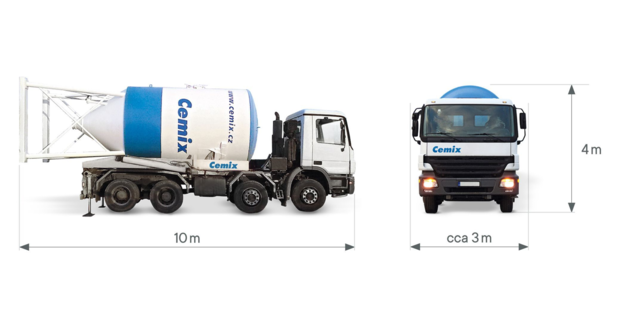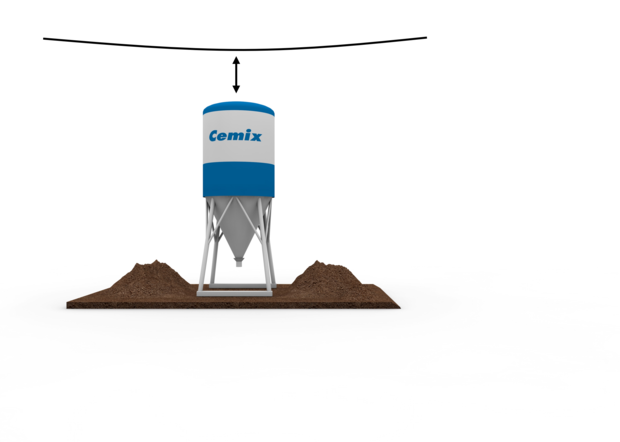The driver may place the silo only on a sufficiently safe ground. The ground must be asphalt, concrete or compacted gravel and must be prepared according to the instructions of the haulage contractor.
Optimal routing and keeping the transport ways free is essential for a smooth delivery of the silos. A stabilized access road with a load capacity of at least 45 tons is required. Ensure that no construction materials, parts or machines are stored on the access road.
- Silo an refill trucks have length between 10m and 16m.
- The width is 3m. The height is 4m.
- 10m trucks have a weight of max. 35t.
- 16m trucks have a weight of max. 45t.
For filling the silo, the injection vehicle must be able to drive at least 8 m to the silo.
The silo may only be moved by crane when it is completely empty and depressurized. Attention must be paid to this: The two upper pick-up pockets must be in the direction of the silo access road.
The filling quantity of a silo is limited by the payload of the respective silo vehicle, i.e. between 10 t and max. 14 t can be delivered when setting up.
For placement and installation of the silo a levelled, reinforced surface of 3 x 3 m with a load-bearing capacity of at least 40 tons is required.
When blowing into the already erected silo, between 10 t and max. 19 t are possible.
Up to 30 KV: Minimum 3 m
Up to 110 KV: Minimum 5 m
Up to 380 KV: Minimum 20 m
How to recognize overhead power lines above 1KV?
- Almost always lattice or concrete poles
- Line runs over poles and transformer stations
- Generally 3 conductor cables or a multiple thereof
- Often additionally a lightning cable
Keep 1 m distance below 1000 V lines.
- Roof stand
- line runs from house to house
- 4 conductor ropes, small distance between ropes (approx. 0.5 m)
How high are the silos?
- 12,5m3: 6,13m
- 18m3: 6,60m
- 22m3: 7,03m





